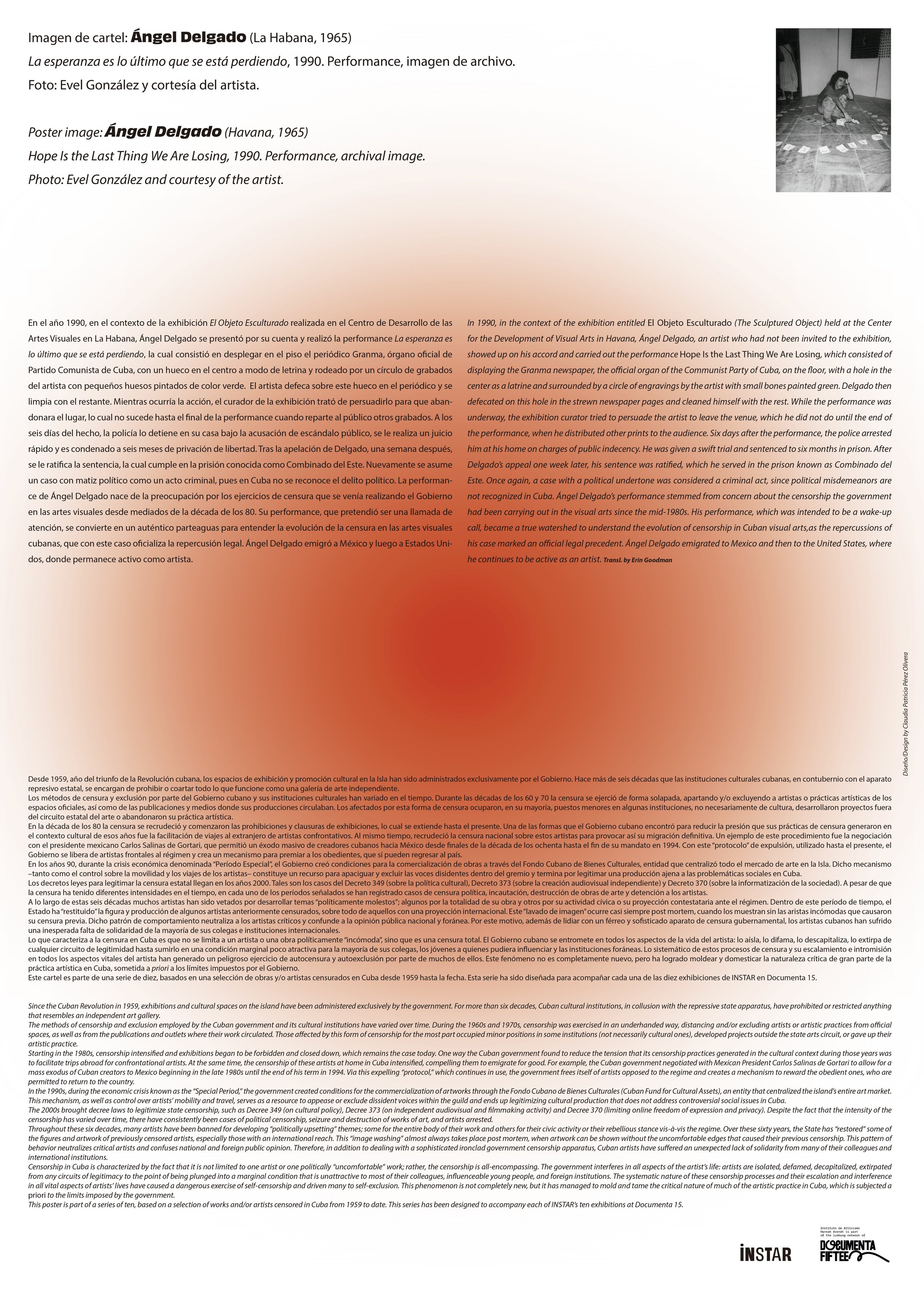


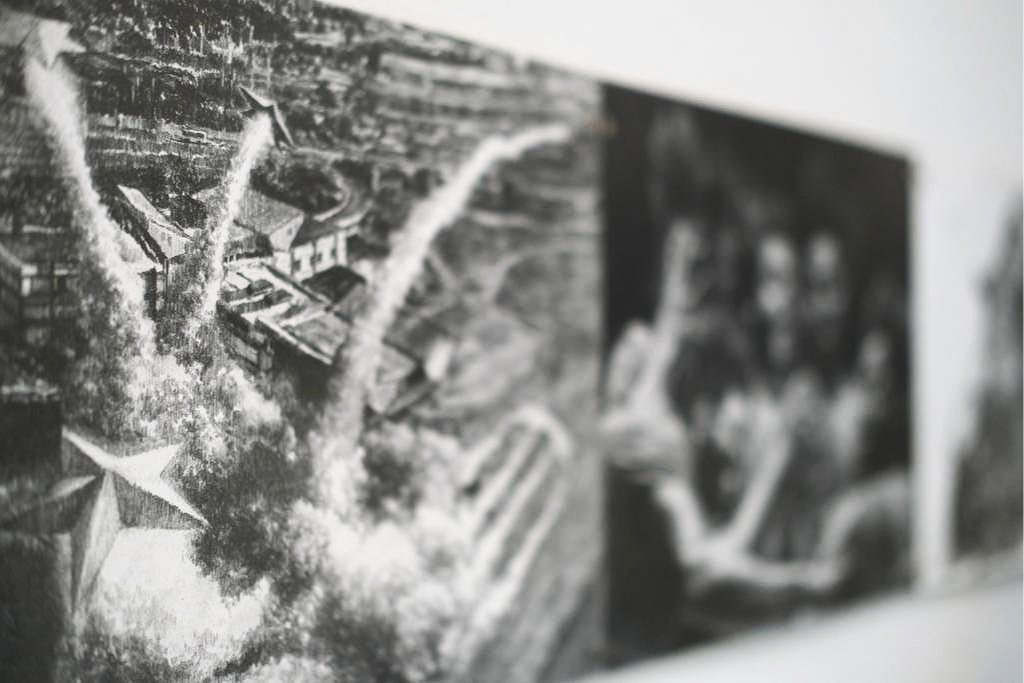

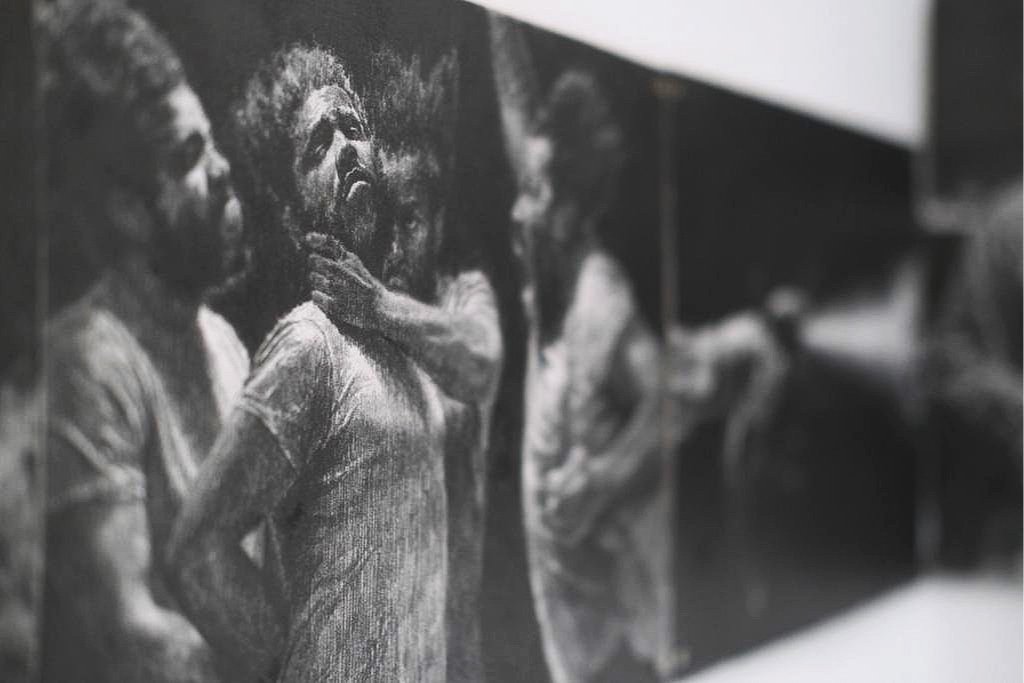






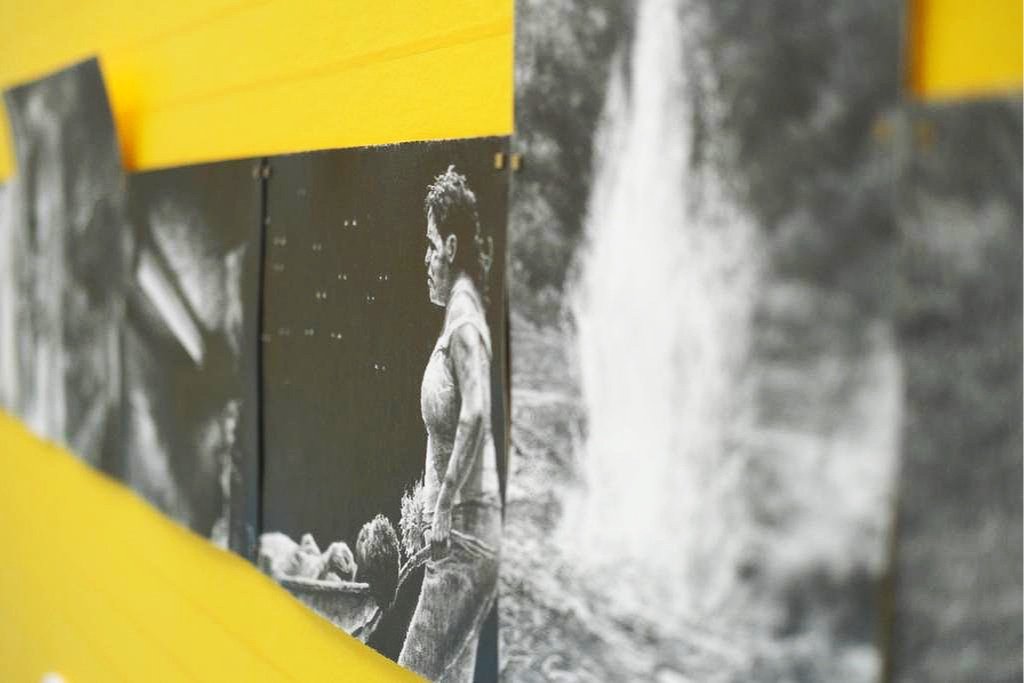


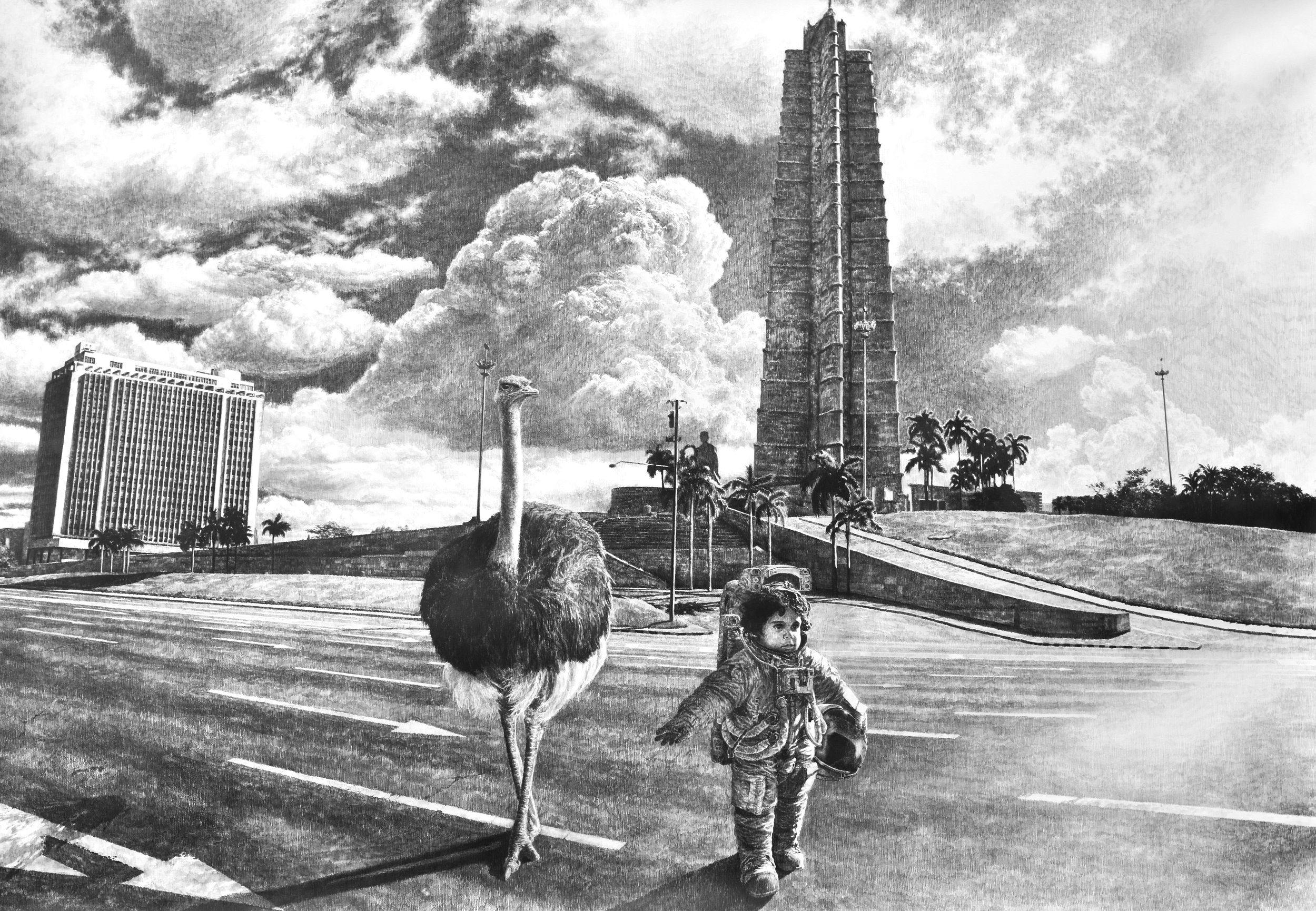

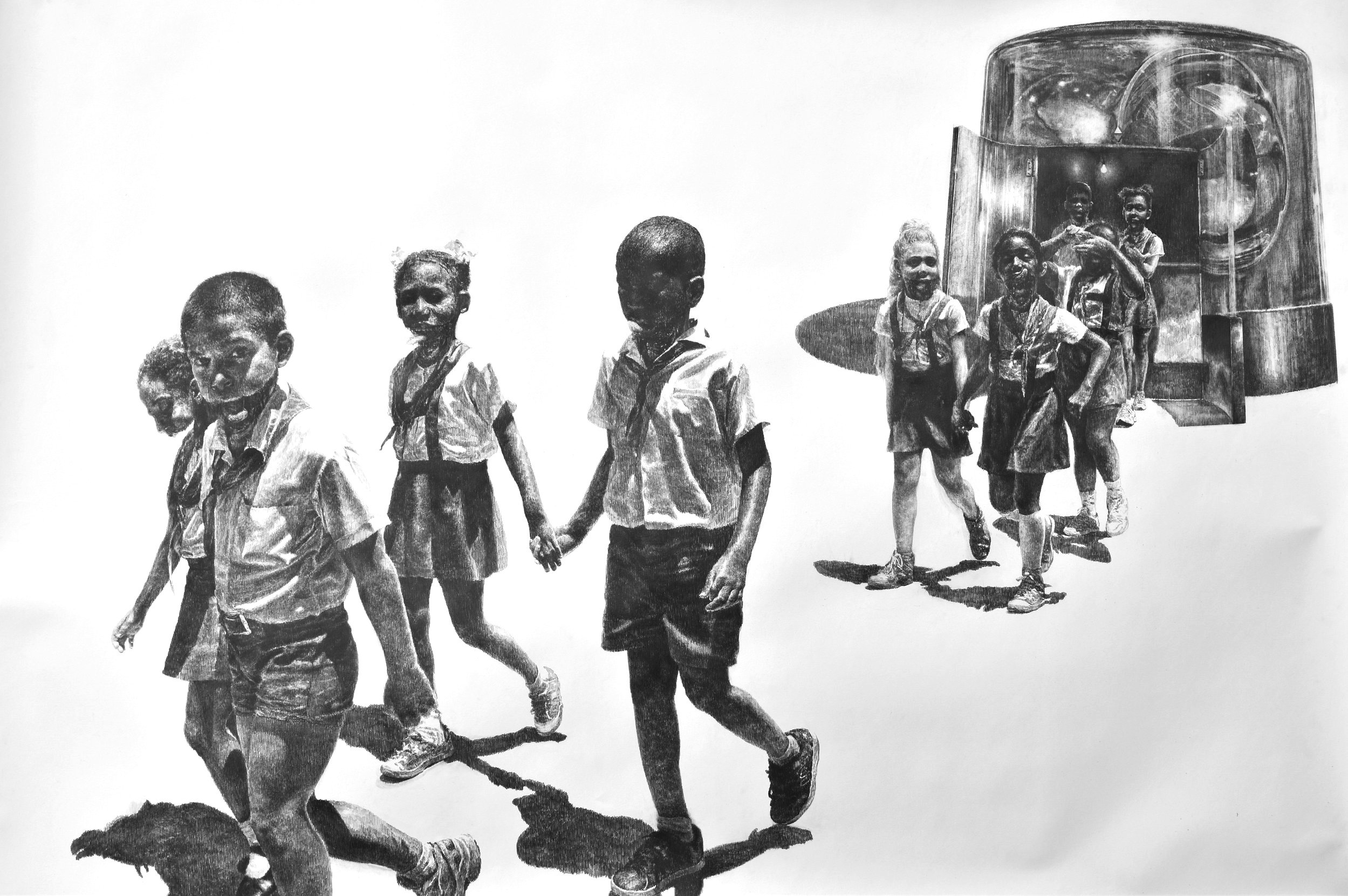

Invited by INSTAR ( Instituto de Artivismo Hannah Arendt ) to Documenta15. Kassel.
Factografía Operativa (Operative Factography) , Documenta Halle.
18 de Junio a 28 de Junio 2022
Curadores: Clara Astiasarán, Tania Bruguera, Ernesto Oroza.
Artistas: Gorky Aguila, Amegla, Ingrid Behety, Miguel Camacho, Raychel Carrión, Alberto Casado, Annelys PM Casanova, Liliam Dooley, Darwin Fornés, Víctor Fung, Hidalgo Holg, Yoel Jiménez, Hamlet Lavastida, Julio Llópiz Casal, Camila Lobón, Claudia Patricia Olivera, Daniel Plutín, Marwin Sánchez, Eric Silva, Armando Tejuca, Annick Woungly.
// texto: INSTAR //
La Factografía Operativa es una metodología desarrollada en los años veinte por el poeta soviético Sergei Tretiakov. El método se basa en el registro y visualización de las actividades de una comunidad para estimular un análisis colectivo. El registro, dispuesto en un espacio común y a modo de un periódico mural, permite organizar y programar las actividades de dicha comunidad; este último paso hace de la factografía una herramienta operativa.
El proceso factográfico operativo emplazado en el Kabinett 1 de Documenta Halle da cuenta de las actividades de INSTAR, desde el momento de su invitación a participar en Documenta hasta el presente. Más que una exposición, este espacio opera como una plataforma que, complementada con el programa público, se concibe para el debate con otros lumbung members, gestores culturales y el público de Documenta sobre las condiciones actuales de la producción cultural en Cuba y, en específico, la difícil realidad política y social en la que INSTAR desarrolla su trabajo.
El espacio se ha organizado a partir de un timeline de eventos constituidos por dibujos de Raychel Carrión, quien a modo de diario fue reaccionando a las noticias y acontecimientos en Cuba en los últimos dos años. Esto le otorga un carácter quasi cronológico a la disposición de los contenidos en el espacio. Otro de los elementos fundamentales de esta puesta en escena factográfica es un mapa de Cuba que indica los lugares donde ocurrieron las manifestaciones populares y masivas en oposición al régimen el 11 de julio de 2021. El mapa fue creado por el Proyecto de periodismo de datos Inventario. Por otro lado, se recoge el material gráfico desarrollado por la diseñadora de INSTAR, Claudia Patricia Olivera. Estos diseños promocionales muestran los actores, las inquietudes y los temas llevados a debate público, así como las campañas públicas de los últimos dos años realizadas desde INSTAR. También, se exhibe una secuencia de carteles, posts gráficos y t-shirts creados por artistas cubanos para las redes sociales. Estos ayudan a narrar los temas más recurrentes: liberación de presos políticos, rechazo a los decretos-ley que atentan contra la libertad de expresión, la confrontación a las mentiras de la dictadura y a sus campañas de manipulación política. Todo lo cual llega a su máxima expresión el 11 de Julio.
La acumulación de fuentes de información que funcionaron simultáneamente y en ocasiones como alianzas entre activistas, opera aquí, a su vez, como recurso retórico. Esta, la primera de una secuencia de 10 mise-en-scene, es quizás la que tenga un carácter más pedagógico, no sólo por el desfase informativo que existe sobre Cuba sino también porque la educación cívica es un objetivo de INSTAR.
// ENG // text: INSTAR //
Operative Factography is a methodology that was developed in the 1920s by the Soviet poet Sergei Tretiakov. The method is based on the recording and display of the activities of a community in order to stimulate a collective analysis. The recordings, displayed in a public space and in the form of a mural-newspaper, permit the organization and planning of the activities of the aforementioned community; this last step makes factography an operational tool.
The operative factographic process set up in Kabinett 1 of Documenta Halle gives an account of the activities of INSTAR from the moment of its invitation to participate in Documenta up to the present. More than an exhibition, this space operates as a platform that—complemented by the public programming—is meant for other lumbung members, cultural actors and Documenta’s audience to debate the current conditions of cultural production in Cuba and, specifically, the difficult political and social reality in which INSTAR carries out its work.
The space has been organized around a timeline of events made up of drawings by Raychel Carrión who, in the manner of a diary, reacted to news and happenings in Cuba over the last two years. This grants the display of the contents in the space a quasi-chronological character. Another of the fundamental elements of this factographic staging is a map of Cuba that indicates the locations where the popular and massive protests against the regime took place on the 11th of July, 2021. The map was created by Inventario, a data-news project. CUBALEX, elToque, and Justicia 11J have been means to, and mediums for, useful information, denunciations, and legal advice for the Cuban people, on and off the island, and especially during the last two years. The statistical data in the space are provided by Inventario and CUBALEX. From the latter, we are also showing a series of legal advice for dealing with arbitrary detentions and police harassment. A selection of didactic videos created by elToque serves to clear up conceptual and legal doubts about the new laws/decrees that restrict freedom of speech. The Justicia 11J project provides data about, and monitors, the legal processes of the protestors detained by the political police on the 11th of July.
In addition, the space also gathers the visual materials developed by Claudia Patricia Olivera, INSTAR’s designer. These materials reveal the actors, anxieties, and issues that became part of the public debate, as well as the public campaigns from the last two years that were created under INSTAR. A sequence of posters, visual posts and t-shirts created by Cuban artists for social media are also exhibited; these help recount the most recurrent themes: liberating political prisoners, rejecting the laws/decrees that threaten freedom of expression, confronting the lies of the dictatorship and its campaigns of public manipulation—all of which reached their loudest expression on the 11th of July.
The accumulation of sources of information that functioned simultaneously—and on occasion as alliances between activists—is at work here, in turn, as a rhetorical resource. This one, which is the first of a sequence in 10 mise-en-scènes, is perhaps the one with the most pedagogical character, not only due to the information gap that exists with respect to Cuba, but also because civic education is one of INSTAR’s objectives.



